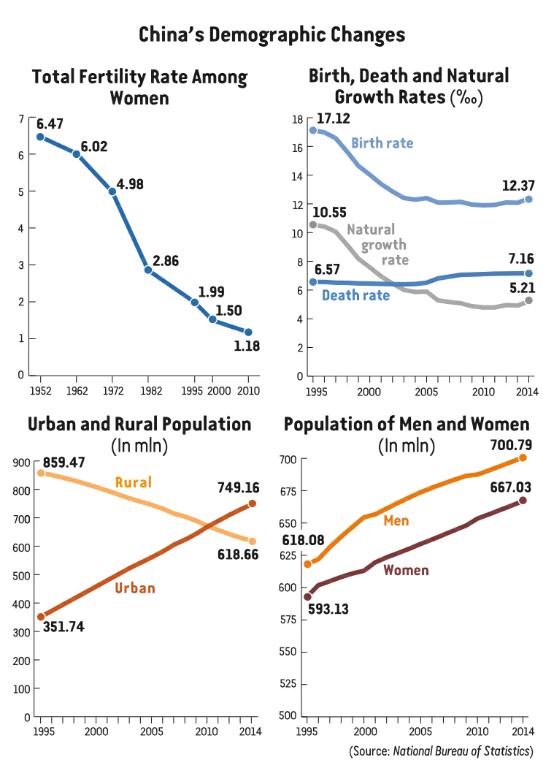LEFT WITH NO WAY UP
2015-12-07ByZhangXiaoxiao
By+Zhang+Xiaoxiao
Few people realize that a declining birth rate might not ever go up again. Data from contemporary countries—be them developed or developing—show that when the birth rate goes down, policies enacted to increase it have a limited impact. Why? Because a declining birth rate creates a high-end, luxury market for parents raising children.
Luxury doesnt just refer to how much money a family spends, but also the time and energy they are expected to devote to child rearing. No matter how much the government encourages families to have more children, the luxury market already created will keep the policies from being effective.
One example of how the declining birth rate and the family planning policy in China have created a luxury market is education. For example, if a family only has 200,000 yuan ($31,600), the parents will borrow money so they can spend 300,000 yuan($47,400) on sending their only child to the best possible middle school. Many families would pay even more if they could choose their childrens school. Families with more than one child would be unable to do this.
If families have more than one child, our education system would be completely different from the current one. In this scenario, the education market will become as diversified as those of ordinary commodities, which provide economical and luxury options with only the wealthy able to afford the latter.
When it comes to having children, many wealthy urban Chinese families will spare no effort in purchasing milk powder abroad due to skeptical food safety records of domestic brands. Those who can afford it buy all for- eign products for their babies. Parents spend every penny they have to give the best to their children. This is the logic of a luxury market.
In addition, the huge amount of energy it takes to raise a child is a fundamental reason the birth rate in developed countries is decreasing. This is also the case in todays China.
One of my friends and his wife drive their child to a one-hour English class every weekend. The couple wanders around the area nearby when their kid is in class and then spend another hour driving home. This fixed arrangement eats up an entire Saturday afternoon for the whole family. They are able to do this because they only have one child, but it would be nearly impossible if they had two.
When a family of six adults—four grandparents and two parents—spends all of their energy, time and money on one child, the kid lives a more luxurious life and gets a higher quality education. When every family can provide these opportunities, a luxury, high-end market is formed and leaves very little room for an alternative low-cost marketplace.
Having a second child is harder today because the one-child policy has created a high standard for how children should be raised in cities, what opportunities they should be given and how much time and energy a family should give to a child. Families will face greater pressure today. Except for those living at the top of the social pyramid, every family gives everything they have to their children and the high pressure to provide more will continue until the children become adults. However, the family will have to give even more then, especially to boys, when its time for the children to marry.
Many scholars blame the decreasing birth rate on a decline in the social benefits of traditional family life. This is not a convincing argument. Take this analogy: The social benefits of marriage are also declining, but we have not seen a large drop in the marriage rate. The real reason, as I have laid out, lies in the high-end education and child rearing market the one-child generation created.
